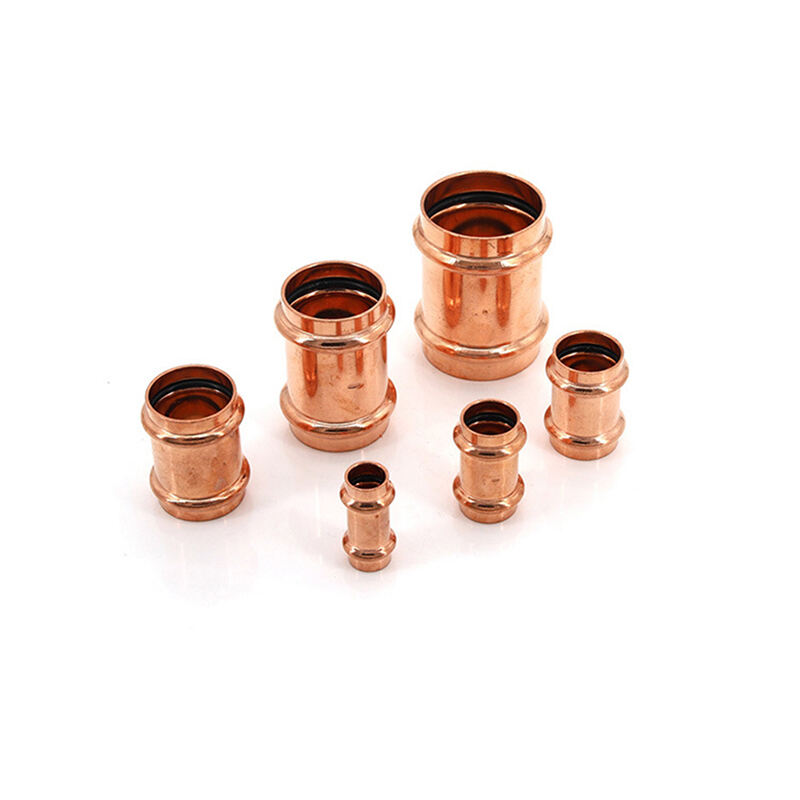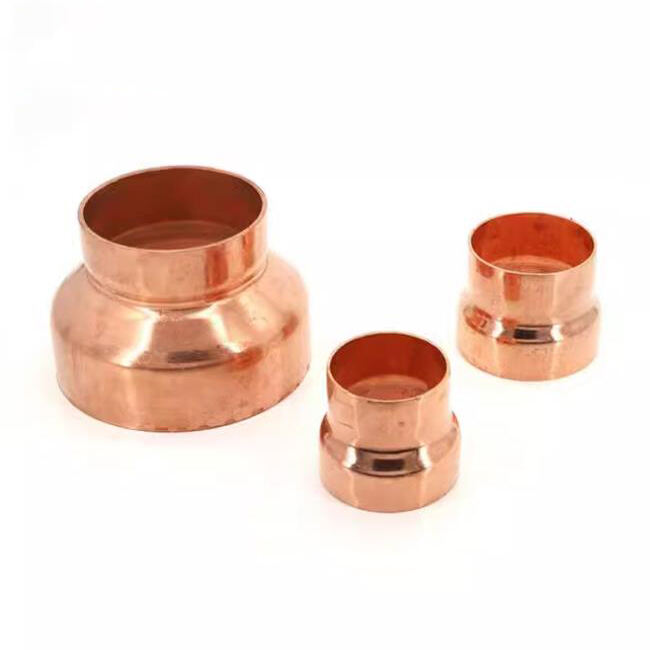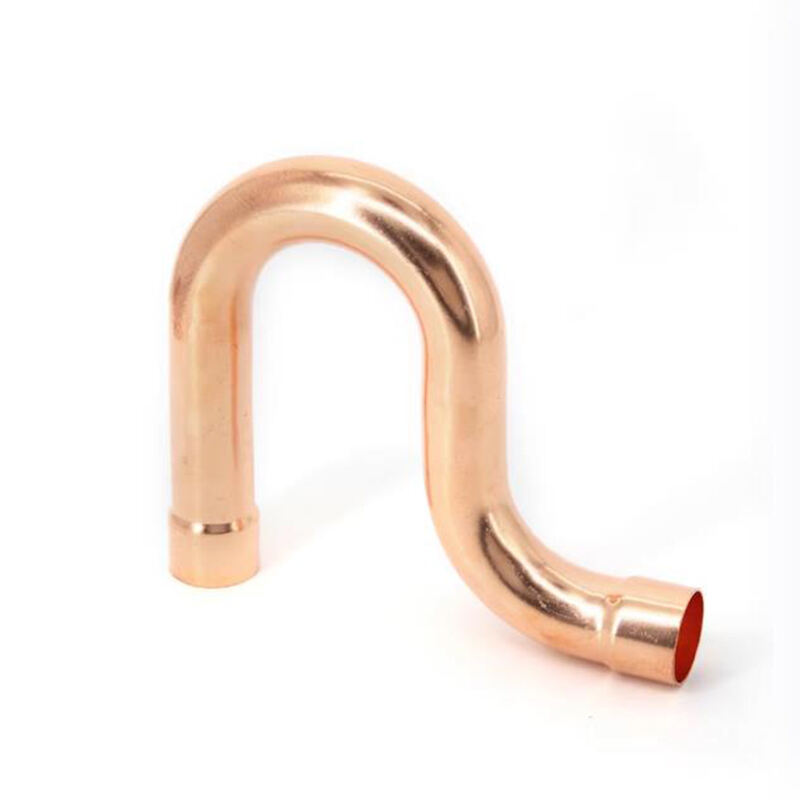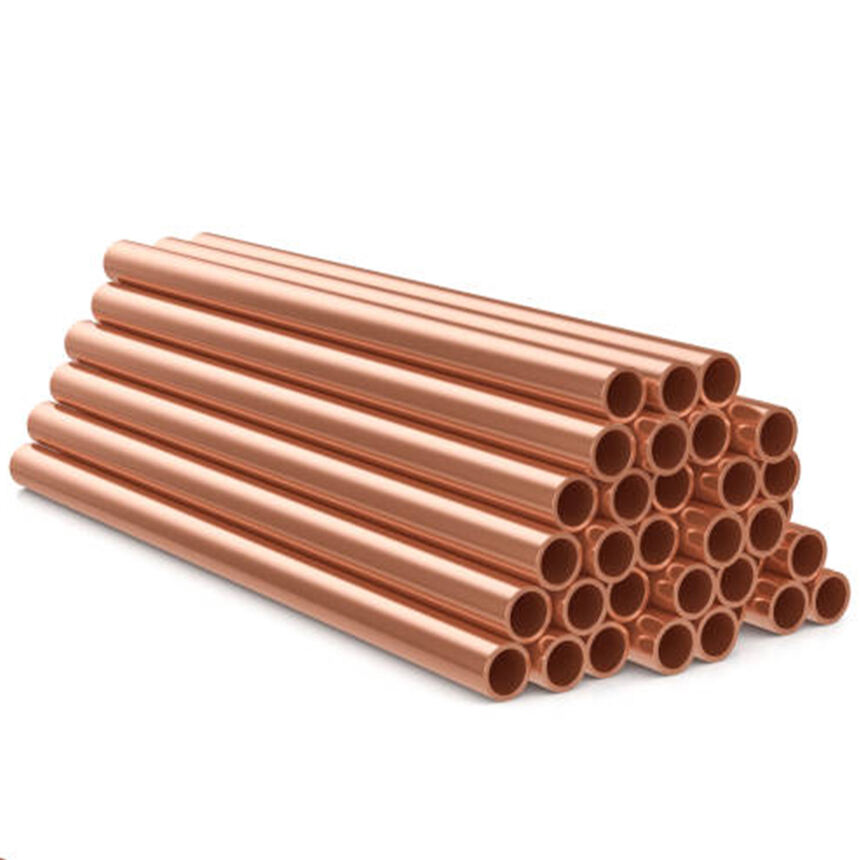Why Couplers Are Ideal for Copper Pipe Extensions
Benefits Over Soldered and Threaded Connections
When it comes to extending copper pipes, couplers beat out both soldered and threaded connections hands down. No more dealing with tricky soldering jobs that take forever and require special skills. Installation becomes much quicker and easier for anyone regardless of their experience level. Threaded connections have their problems too - those threads get worn down over time and might start leaking eventually. Couplers just don't have these issues, so they tend to last longer without failing. What really stands out about couplers though is how flexible they are during installation. Need to make some adjustments on site? No problem at all. This makes life much simpler when working with pipes that aren't laid out in standard ways. And let's not forget the big plus point: unlike soldered joints that become permanent once made, couplers can be taken apart again if needed. Makes fixing things later or changing the setup way less frustrating than tearing everything apart just to fix one bad solder joint somewhere deep inside a wall.
Quick Coupling Advantages for Time-Sensitive Projects
Quick coupling systems bring real advantages to projects where timing matters most. They cut down on installation time significantly, so they work great when there's an emergency repair needed or when launching something new under tight deadlines. Most models don't need many tools at all, which means workers get things done faster and spend less time waiting around for fixes. Some couplings actually snap together by hand without any fancy equipment, something that field technicians really appreciate during those hectic moments between jobs. What stands out about these systems too is how well they perform in awkward locations. Installers often deal with cramped quarters or hard to reach areas, but quick couplings still manage to fit right in there without causing major headaches. That kind of adaptability explains why construction crews and maintenance teams rely so heavily on them whenever time is money.
Types of Copper Pipe Couplers for Secure Extensions
Compression Couplers for Rigid Pipe Types (K/L/M)
Compression couplers play a vital role in connecting copper pipes securely. When installed properly, they compress around the pipe with a metal ring called a ferrule, forming a tight seal that stops water from leaking out. These fittings work well with most common copper pipe sizes like K, L, and M types, so plumbers can use them across different jobs without needing special tools. A big plus for many people is that compression joints don't require soldering at all. This means no open flames or messy flux, making installation much easier for weekend warriors trying their hand at plumbing or professionals working on tight schedules. Still worth remembering though, getting the right size matters a lot. Even if everything looks good initially, using an incorrect sized coupling will eventually lead to problems down the road when pressure builds up inside the system.
Push-Fit Connectors: SharkBite and Modern Alternatives
Push fit connectors, like those made by SharkBite which many plumbers swear by, are changing how we connect pipes today. The whole process is pretty simple actually just slide the pipe into the fitting and that's it no wrenches or soldering required at all. What makes them so great is they create a watertight seal right away, which comes in handy during those urgent plumbing emergencies when time is money. I've seen these work wonders in both old homes with their insulation layers and newer buildings too. Another nice feature is that if something needs adjusting later on, these fittings come off fairly easy without messing up the rest of the system. That kind of flexibility really helps keep everything running smoothly over time.
Specialized Fittings: Flare Tees and Conduit Applications
Flare tees serve as those special fittings that work great for making T-joint connections when extending or changing pipe layouts. When working with conduits, these particular fittings really boost both the stability and air flow throughout the whole setup. Made from tough stuff like brass or stainless steel, they hold up against problems we often see in the field such as rust spots and water seepage issues. Getting familiar with what each type does matters a lot when picking out parts for a job, because this knowledge helps guarantee good results over time across different kinds of installations. Proper use of these specialized pieces leads to stronger, better performing systems regardless of whether someone is installing flare tees specifically or tackling some other kind of conduit work.
Selecting the Best Coupler for Your Project
Matching Coupler Type to Pipe Wall Thickness
Getting the right match between couplers and pipe wall thickness matters a lot when working on plumbing jobs. Copper pipes come in different varieties like K, L, and M, each with their own wall thickness measurements. These differences really affect what kind of coupler works best for the job at hand. Choosing correctly avoids those frustrating leaks down the road while staying within code requirements set by the industry. Most plumbers know from experience that matching these components properly makes all the difference in creating installations that last. Always check those product specs sheets too they contain valuable information about whether a particular coupler will work well with specific pipes and give details needed to make smart choices before starting any project.
Pressure Ratings and Code Compliance Considerations
Knowing what pressure ratings couplers can handle helps prevent going beyond their limits, something that often causes systems to fail unexpectedly. Getting familiar with both local and national building codes makes sure everything gets installed according to law. Different projects need different pressure specs depending on materials involved, so matching couplers to these specs cuts down on safety risks. Checking out guidelines from organizations like NFPA adds another layer of confidence that work meets recognized industry standards. Most professionals find these resources invaluable when trying to balance compliance with actual performance needs on site.
Corrosion Resistance for Long-Term Durability
Couplers constructed from materials that resist corrosion last much longer, especially when installed in places where there's exposure to acids or alkalis. Checking systems regularly makes all the difference in catching early signs of corrosion before they lead to costly failures down the road. Many plumbers also apply protective coatings to copper joints as an extra layer of defense against rust, which works wonders in areas prone to moisture issues. When picking out materials for new installations, it pays to consider what kind of environment the system will face day after day. A stainless steel coupling might be overkill for some jobs but absolutely necessary in others. Getting this right upfront saves headaches later on.
Installation Best Practices for Copper Couplers
Step-by-Step Guide to Leak-Proof Connections
Getting those copper couplers installed without leaks requires some attention to detail. Start off by making sure the pipe ends are clean and free from dirt or old gunk that might mess up the seal between them. The manufacturers usually have specific guidelines about how tight to make those couplers, so following their instructions pretty closely matters a lot for getting everything sealed properly. Once they're all put together, don't forget to run some pressure tests on the connections afterward. This helps spot any sneaky little leaks before they become big headaches later on. And speaking of later on, keeping an eye on these connections over time through regular checks makes sense too. Catching small signs of wear early prevents bigger problems down the road and keeps the whole system working as intended without unexpected water damage somewhere nobody wants it.
When to Use Support Brackets with Extension Couplers
Support brackets are really important for keeping copper pipe systems stable, particularly when working with extension couplers. These brackets spread out the weight across different points along the pipe and reduce stress buildup. This matters a lot in situations where pipes run long distances horizontally or go up vertically through walls. Finding spots where extra support is needed helps avoid putting too much pressure on those connection points between sections. Always follow local building codes when installing these supports because they actually make a big difference in how long the whole plumbing system lasts. During regular maintenance checks, take a look at all the brackets to spot any signs of wear or loosening before something breaks unexpectedly. A little attention here goes a long way toward making sure water flows properly without surprises down the road.
Maintenance Tips for Coupled Joint Systems
Keeping coupled joint systems running smoothly requires checking them regularly for things like wear spots, rust buildup, or any visible damage. Setting up a routine maintenance plan makes it easier to catch problems before they get serious and extends how long these systems last. When technicians write down exactly what they do during each inspection, it creates a valuable record that can help figure out what went wrong later on and plan repairs better. Cleaning matters too – using the right solvents and avoiding harsh chemicals prevents unnecessary wear while keeping those couplings working properly. People who work with copper piping networks should know basic care tips as well. Simple things like wearing gloves when handling joints or knowing which tools not to use can make a big difference in preventing accidental damage over time. This kind of knowledge pays off in longer lasting systems and fewer headaches down the road.









